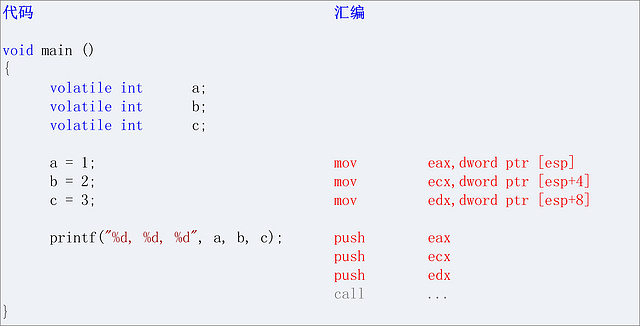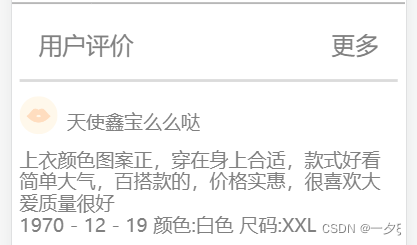目录
一,Redis的命令操作
1.Redis简介
2.Redis安装(按步骤执行以下步骤即可)
3.redis命令
二,java代码操作Redis
1.java连接Redis
2.java操作Redis
三,Spring注解式缓存Redis
1.Spring整合Redis
2.redis注解式缓存
3.Redis击穿穿透以及雪崩
击穿:高并发量的同时key失效,导致请求直接到达数据库;
一,Redis的命令操作
1.Redis简介
Redis是一个开源(BSD许可),内存存储的数据结构服务器,可用作数据库,高速缓存和消息队列代理。
它支持字符串、哈希表、列表、集合、有序集合,位图,hyperloglogs等数据类型。内置复制、Lua脚本、LRU收回、事务以及不同级别磁盘持久化功能,
同时通过Redis Sentinel提供高可用,通过Redis Cluster提供自动分区
学习网址:Redis 教程_w3cschool
Redis用途:1. 数据库 2. 缓存
集群:哨兵、主从、分片式
2.Redis安装(按步骤执行以下步骤即可)
1.解压redis
tar -zxvf redis-5.0.0.tar.gz -C /usr/local2.安装gcc
yum install gcc3.编译redis
cd /redis-5.0.0
make4.检测安装情况
make install5.修改redis.conf文件
cp redis.conf redis_bak.conf
将daemonize no 改为 daemonize yes6.启动redis
./redis-server ../redis.conf7.测试redis启动是否成功
./redis-cli
ping附录
Linux在文件中查找关键字
vim xxx.conf
先"/" 然后"关键字" 再enter;"n"指找下一个查看redis进程:
ps -ef | grep redis
yum install -y lsof
lsof -i:6379
杀掉redis进程:kill -9 进程pid
以上为无密码链接,修改为有密码,并且外部访问的方式如下
1.修改redis.conf
注释:bind 127.0.0.1
修改:requirepass 1234562.杀掉redis进程
3.启动redis.conf的新配置
./src/redis-server redis.conf4.客户端redis-cli链接redis,重新测试
./src/redis-cli -h 127.0.0.1 -p 6379 -a 123456
ping
select 15.redismanager链接测试成功
3.redis命令
set key //保存
set name zs
set age 12
set sex nanget key //获取
get nametype key //查看类型
type age //string 说明type返回的是键值对存储类型,而不是值存储类型keys *或keys key //查看所有或者指定的key
keys *SETEX KEY_NAME TIMEOUT VALUE // 给键值对设置过期时间
setex zs 60 livettl key // 获取键值对剩余的存活时间
ttl zs
Redis哈希(Hash)
Redis hash 是一个string类型的field和value的映射表,hash特别适合用于存储对象。
hset key field1 value1 [field2 value2] 同时将多个field-value设置到哈希表key中
hset user name zs age 12 sex nv
hget key field #获取指定的字段值
hget user age
hdel key field #删除指定的字段值
hdel user age
hgetall key #查询指定key的所有字段
hgetall user
hexists key field #查询指定key中的字段是否存在
hexists user name
hlen key #获取指定key中的长度
hlen userRedis列表(List)
Redis列表是简单的字符串列表,按照插入顺序排序。你可以添加一个元素到列表的头部(左边)或者尾部(右边)
lpush key value1 value2 value3 #将一个或多个值插入到列表头部
lpush en a b c d e f g
llen key #获取列表的长度
llen en
lindex key index #根据索引获取列表中的元素
lindex en 1 #返回f,说明下标从0开始,同时先进后出
lrange key start sop #查看指定范围内的元素
lrange en 1 3 #返回fed,说明下标从0开始,同时先进后出Redis集合(Set)
Redis 的 Set 是 String 类型的无序集合。集合成员是唯一的,这就意味着集合中不能出现重复的数据
sadd key value1 [value2] #向集合添加一个或多个元素
sadd hobby lanqiu zuqiu bingpangqiu zhuoqiu
scard key #获取集合中的元素数量
scard hobby
exists key #是否存在
exists hobby有序集合(sort set)
参考网址:Redis 有序集合(sorted set)_w3cschool
二,java代码操作Redis
1.java连接Redis
首先在编码前我们先将环境搭好,导入相关依赖
<dependency>
<groupId>redis.clients</groupId>
<artifactId>jedis</artifactId>
<version>2.9.0</version>
</dependency>其次就是相关连接,Jedis jedis = new Jedis("192.168.230.129", 6379);这里如果是自身有云服务器的话直接连接服务器
这边由于本人窘迫连接的地址为虚拟机上的地址

Jedis jedis = new Jedis("192.168.195.139", 6379);
jedis.auth("123456");
System.out.println(jedis.ping());
jedis.select(1);2.java操作Redis
Redis字符串(String)
set key //保存
jedis.set("string_name","wangwu");
get key //获取
System.out.println(jedis.get("string_name"));
type key //查看类型
System.out.println(jedis.type("string_name"));
keys * 或keys key //查看所有或者指定的key
System.out.println(jedis.keys("*"));
SETEX KEY_NAME TIMEOUT VALUE // 给键值对设置过期时间
jedis.setex("string_zs",30,"活着");
ttl key // 获取键值对剩余的存活时间
System.out.println(jedis.ttl("string_zs"));
Redis哈希(Hash)
hset key field1 value1 [field2 value2] #同时将多个field-value设置到哈希表key中
jedis.hset("java_user","name","zs");
jedis.hset("java_user","sex","男");
jedis.hset("java_user","age","12");hget key field #获取指定的字段值
System.out.println(jedis.hget("java_user", "sex"));hdel key field #删除指定的字段值
jedis.hdel("java_user","sex");hgetall key #查询指定key的所有字段
Map<String, String> java_user_map = jedis.hgetAll("java_user");
System.out.println(java_user_map);hexists key field #查询指定key中的字段是否存在
Boolean java_user = jedis.hexists("java_user","sex");
System.out.println(java_user);hlen key #获取指定key中的长度
Long java_user_len = jedis.hlen("java_user");
System.out.println(java_user_len);
Redis列表(List)
lpush key value1 value2 value3 #将一个或多个值插入到列表头部
jedis.lpush("java_hobby", "篮球", "足球", "羽毛球");
llen key #获取列表的长度
Long java_hobby_len = jedis.llen("java_hobby");
System.out.println(java_hobby_len);
lindex key index #根据索引获取列表中的元素
System.out.println(jedis.lindex("java_hobby", 0));
lrange key start sop #查看指定范围内的元素
System.out.println(jedis.lrange("java_hobby", 0, 1));
Redis集合(Set)
// # sadd key value1 [value2] #向集合添加一个或多个元素
jedis.sadd("java_set_user","张三","李四","王五","张三丰");
// # scard key #获取集合中的元素数量
System.out.println(jedis.scard("java_set_user"));
// # exists key #是否存在
System.out.println(jedis.exists("java_set_user"));
三,Spring注解式缓存Redis
1.Spring整合Redis
导入相关依赖
<redis.version>2.9.0</redis.version>
<redis.spring.version>1.7.1.RELEASE</redis.spring.version>
<dependency>
<groupId>redis.clients</groupId>
<artifactId>jedis</artifactId>
<version>${redis.version}</version>
</dependency>
<dependency>
<groupId>org.springframework.data</groupId>
<artifactId>spring-data-redis</artifactId>
<version>${redis.spring.version}</version>
</dependency>Redis-properties(连接Redis相关)
redis.hostName=192.168.195.139
redis.port=6379
redis.password=123456
redis.timeout=10000
redis.maxIdle=300
redis.maxTotal=1000
redis.maxWaitMillis=1000
redis.minEvictableIdleTimeMillis=300000
redis.numTestsPerEvictionRun=1024
redis.timeBetweenEvictionRunsMillis=30000
redis.testOnBorrow=true
redis.testWhileIdle=true
redis.expiration=3600spring-redis.xml文件(相关配置)
<?xml version="1.0" encoding="UTF-8"?>
<beans xmlns="http://www.springframework.org/schema/beans"
xmlns:xsi="http://www.w3.org/2001/XMLSchema-instance"
xmlns:context="http://www.springframework.org/schema/context"
xmlns:cache="http://www.springframework.org/schema/cache"
xsi:schemaLocation="http://www.springframework.org/schema/beans
http://www.springframework.org/schema/beans/spring-beans.xsd
http://www.springframework.org/schema/context
http://www.springframework.org/schema/context/spring-context.xsd
http://www.springframework.org/schema/cache
http://www.springframework.org/schema/cache/spring-cache.xsd">
<!-- 1. 引入properties配置文件 -->
<!--<context:property-placeholder location="classpath:redis.properties" />-->
<!-- 2. redis连接池配置-->
<bean id="poolConfig" class="redis.clients.jedis.JedisPoolConfig">
<!--最大空闲数-->
<property name="maxIdle" value="${redis.maxIdle}"/>
<!--连接池的最大数据库连接数 -->
<property name="maxTotal" value="${redis.maxTotal}"/>
<!--最大建立连接等待时间-->
<property name="maxWaitMillis" value="${redis.maxWaitMillis}"/>
<!--逐出连接的最小空闲时间 默认1800000毫秒(30分钟)-->
<property name="minEvictableIdleTimeMillis" value="${redis.minEvictableIdleTimeMillis}"/>
<!--每次逐出检查时 逐出的最大数目 如果为负数就是 : 1/abs(n), 默认3-->
<property name="numTestsPerEvictionRun" value="${redis.numTestsPerEvictionRun}"/>
<!--逐出扫描的时间间隔(毫秒) 如果为负数,则不运行逐出线程, 默认-1-->
<property name="timeBetweenEvictionRunsMillis" value="${redis.timeBetweenEvictionRunsMillis}"/>
<!--是否在从池中取出连接前进行检验,如果检验失败,则从池中去除连接并尝试取出另一个-->
<property name="testOnBorrow" value="${redis.testOnBorrow}"/>
<!--在空闲时检查有效性, 默认false -->
<property name="testWhileIdle" value="${redis.testWhileIdle}"/>
</bean>
<!-- 3. redis连接工厂 -->
<bean id="connectionFactory" class="org.springframework.data.redis.connection.jedis.JedisConnectionFactory"
destroy-method="destroy">
<property name="poolConfig" ref="poolConfig"/>
<!--IP地址 -->
<property name="hostName" value="${redis.hostName}"/>
<!--端口号 -->
<property name="port" value="${redis.port}"/>
<!--如果Redis设置有密码 -->
<property name="password" value="${redis.password}"/>
<!--客户端超时时间单位是毫秒 -->
<property name="timeout" value="${redis.timeout}"/>
</bean>
<!-- 4. redis操作模板,使用该对象可以操作redis
hibernate课程中hibernatetemplete,相当于session,专门操作数据库。
-->
<bean id="redisTemplate" class="org.springframework.data.redis.core.RedisTemplate">
<property name="connectionFactory" ref="connectionFactory"/>
<!--如果不配置Serializer,那么存储的时候缺省使用String,如果用User类型存储,那么会提示错误User can't cast to String!! -->
<property name="keySerializer">
<bean class="org.springframework.data.redis.serializer.StringRedisSerializer"/>
</property>
<property name="valueSerializer">
<bean class="org.springframework.data.redis.serializer.GenericJackson2JsonRedisSerializer"/>
</property>
<property name="hashKeySerializer">
<bean class="org.springframework.data.redis.serializer.StringRedisSerializer"/>
</property>
<property name="hashValueSerializer">
<bean class="org.springframework.data.redis.serializer.GenericJackson2JsonRedisSerializer"/>
</property>
<!--开启事务 -->
<property name="enableTransactionSupport" value="true"/>
</bean>
<!-- 5.配置缓存管理器 -->
<bean id="redisCacheManager" class="org.springframework.data.redis.cache.RedisCacheManager">
<constructor-arg name="redisOperations" ref="redisTemplate"/>
<!--redis缓存数据过期时间单位秒-->
<property name="defaultExpiration" value="${redis.expiration}"/>
<!--是否使用缓存前缀,与cachePrefix相关-->
<property name="usePrefix" value="true"/>
<!--配置缓存前缀名称-->
<property name="cachePrefix">
<bean class="org.springframework.data.redis.cache.DefaultRedisCachePrefix">
<constructor-arg index="0" value="-cache-"/>
</bean>
</property>
</bean>
<!--6.配置缓存生成键名的生成规则-->
<bean id="cacheKeyGenerator" class="com.zking.ssm.redis.CacheKeyGenerator"></bean>
<!--7.启用缓存注解功能-->
<cache:annotation-driven cache-manager="redisCacheManager" key-generator="cacheKeyGenerator"/>
</beans>注意:redis.properties与jdbc.properties在与Spring做整合时会发生冲突;所以引入配置文件的地方要放到SpringContext.xml中
SpringContext.xml配置如下
<?xml version="1.0" encoding="UTF-8"?>
<beans xmlns="http://www.springframework.org/schema/beans"
xmlns:xsi="http://www.w3.org/2001/XMLSchema-instance"
xsi:schemaLocation="http://www.springframework.org/schema/beans http://www.springframework.org/schema/beans/spring-beans.xsd">
<!--1. 引入外部多文件方式 -->
<bean id="propertyConfigurer"
class="org.springframework.beans.factory.config.PropertyPlaceholderConfigurer">
<property name="systemPropertiesModeName" value="SYSTEM_PROPERTIES_MODE_OVERRIDE" />
<property name="ignoreResourceNotFound" value="true" />
<property name="locations">
<list>
<value>classpath:jdbc.properties</value>
<value>classpath:redis.properties</value>
</list>
</property>
</bean>
<!--引入mybatis的相关配置文件-->
<import resource="applicationContext-mybatis.xml"></import>
<!--spring管理ehcache对应配置文件-->
<import resource="applicationContext-ehcache.xml"></import>
<!--spring管理redis对应配置文件-->
<import resource="applicationContext-redis.xml"></import>
<import resource="applicationContext-shiro.xml"/>
</beans>2.redis注解式缓存
@Cacheable
配置在方法或类上,作用:本方法执行后,先去缓存看有没有数据,如果没有,从数据库中查找出来,给缓存中存一份,返回结果, 下次本方法执行,在缓存未过期情况下,先在缓存中查找,有的话直接返回,没有的话从数据库查找
value:缓存位置的一段名称,不能为空
key:缓存的key,默认为空,表示使用方法的参数类型及参数值作为key,支持SpEL
condition:触发条件,满足条件就加入缓存,默认为空,表示全部都加入缓存,支持SpEL
@RunWith(SpringJUnit4ClassRunner.class)
@ContextConfiguration(locations={"classpath:applicationContext.xml"})@Cacheable 的测试代码
@Cacheable(value = "user-clz",key = "'clz:'+#cid",condition = "#cid < 5")
Clazz selectByPrimaryKey(Integer cid);代码如下
public void test1(){
测试 Cacheable 中的value,以及缓存的应用体现
System.out.println(clazzBiz.selectByPrimaryKey(1));
System.out.println("======================================");
System.out.println(clazzBiz.selectByPrimaryKey(1));
测试 Cacheable 中的 key
System.out.println(clazzBiz.selectByPrimaryKey(3));
System.out.println("======================================");
System.out.println(clazzBiz.selectByPrimaryKey(3));
测试 Cacheable 中的 condition
System.out.println(clazzBiz.selectByPrimaryKey(4));
System.out.println("======================================");
System.out.println(clazzBiz.selectByPrimaryKey(4));
}测试结果为:redis中有数据,则访问redis;如果没有数据,则访问MySQL;
@CachePut
类似于更新操作,即每次不管缓存中有没有结果,都从数据库查找结果,并将结果更新到缓存,并返回结果
value 缓存的名称,在 spring 配置文件中定义,必须指定至少一个
key 缓存的 key,可以为空,如果指定要按照 SpEL 表达式编写,如果不指定,则缺省按照方法的所有参数进行组合
condition 缓存的条件,可以为空,使用 SpEL 编写,返回 true 或者 false,只有为 true 才进行缓存
测试代码
@CachePut(value = "user-clz-put")
Clazz selectByPrimaryKey(Integer cid);@Test
public void test2(){
测试 Cacheput 中的 key
System.out.println(clazzBiz.selectByPrimaryKey(4));
System.out.println("======================================");
System.out.println(clazzBiz.selectByPrimaryKey(4));
}测试结果为:只存不取
@CacheEvict
用来清除用在本方法或者类上的缓存数据(用在哪里清除哪里)
value:缓存位置的一段名称,不能为空
key:缓存的key,默认为空,表示使用方法的参数类型及参数值作为key,支持SpEL
condition:触发条件,满足条件就加入缓存,默认为空,表示全部都加入缓存,支持SpEL
allEntries:true表示清除value中的全部缓存,默认为false
测试代码
@CacheEvict(value = "user-clz-put",key = "'clz:'+#cid") 删除指定的缓存数据
@CacheEvict(value = "user-clz-put",allEntries = true) // 删除以 user-clz-put开头的 缓存
int deleteByPrimaryKey(Integer cid);@Test
public void test3(){
测试 CacheEvict 中的 key
clazzBiz.deleteByPrimaryKey(2);
}测试结果为:可以配置删除指定缓存数据,也可以删除符合规则的所有缓存数据
3.Redis击穿穿透以及雪崩
击穿:高并发量的同时key失效,导致请求直接到达数据库;
设置锁
1.获取 Redis 锁,如果没有获取到,则回到任务队列继续排队
2.获取到锁,从数据库拉取数据并放入缓存中
3.释放锁,其他请求从缓存中拿到数据限流:请求redis之前做流量削峰
穿透: 很多请求都在访问数据库一定不存在的数据,造成请求将缓存和数据库都穿透的情况。
规则排除
可以增加一些参数检验。例如数据库数据 id 一般都是递增的,如果请求 id = -10 这种参数,势必绕过Redis。避免这种情况,可以对用户真实性检验等操作。null值填充
当缓存穿透时,redis存入一个类似null的值,下次访问则直接缓存返回空,当数据库中存在该数据的值则需要把redis存在的null值清除并载入新值,此方案不能解决频繁随机不规则的key请求。
雪崩: 雪崩和击穿类似,不同的是击穿是一个热点 Key 某时刻失效,而雪崩是大量的热点 Key 在一瞬间失效 。
给不同的热点key设置不同的缓存策略
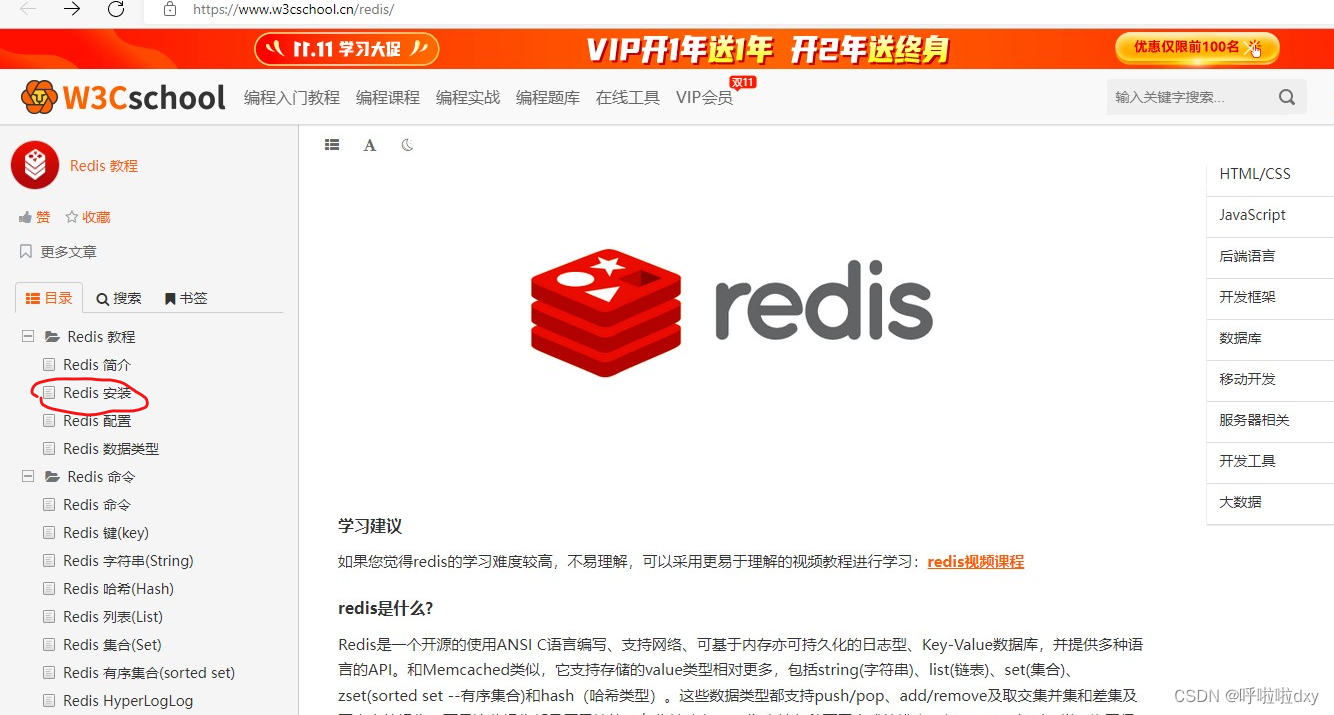
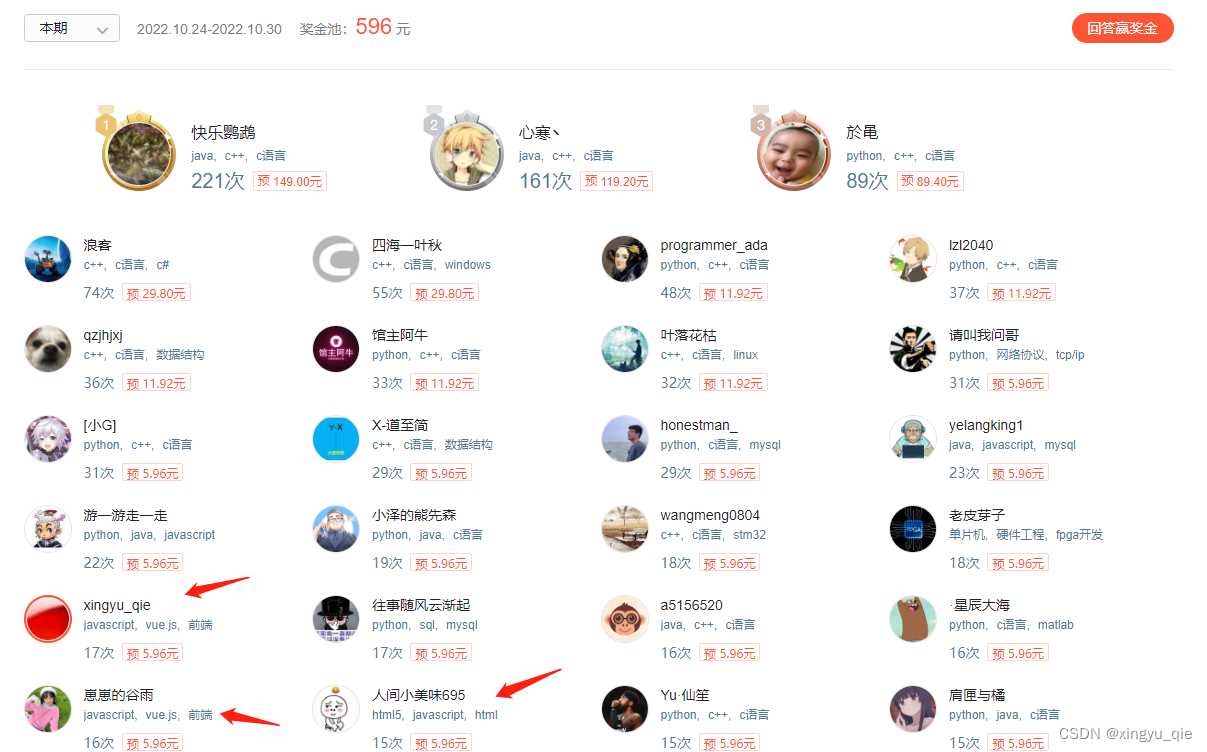



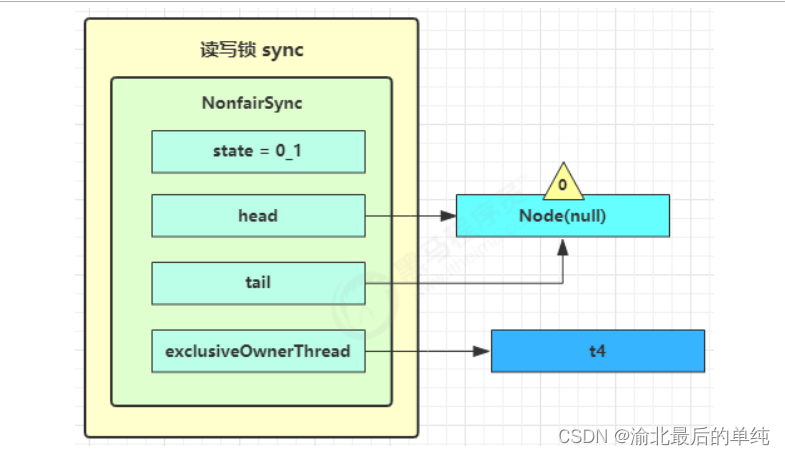
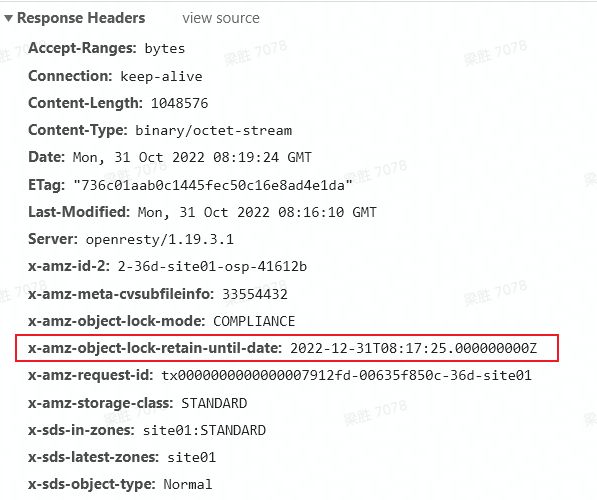

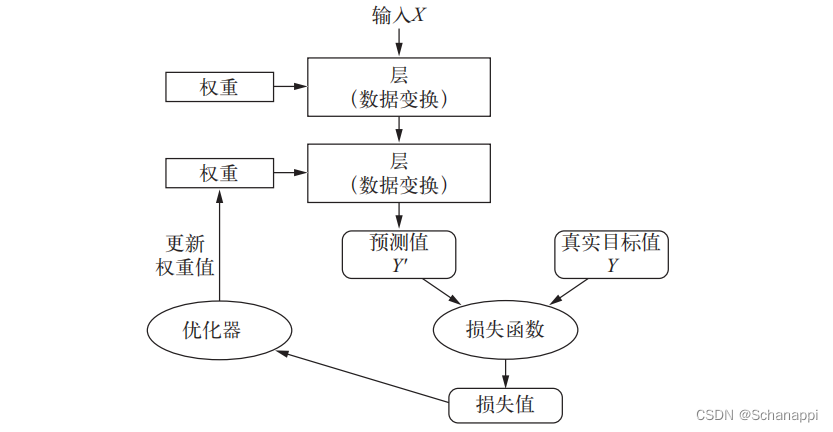

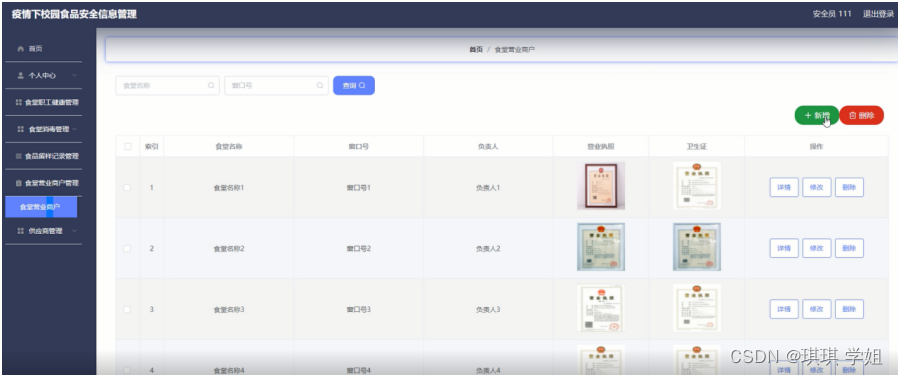
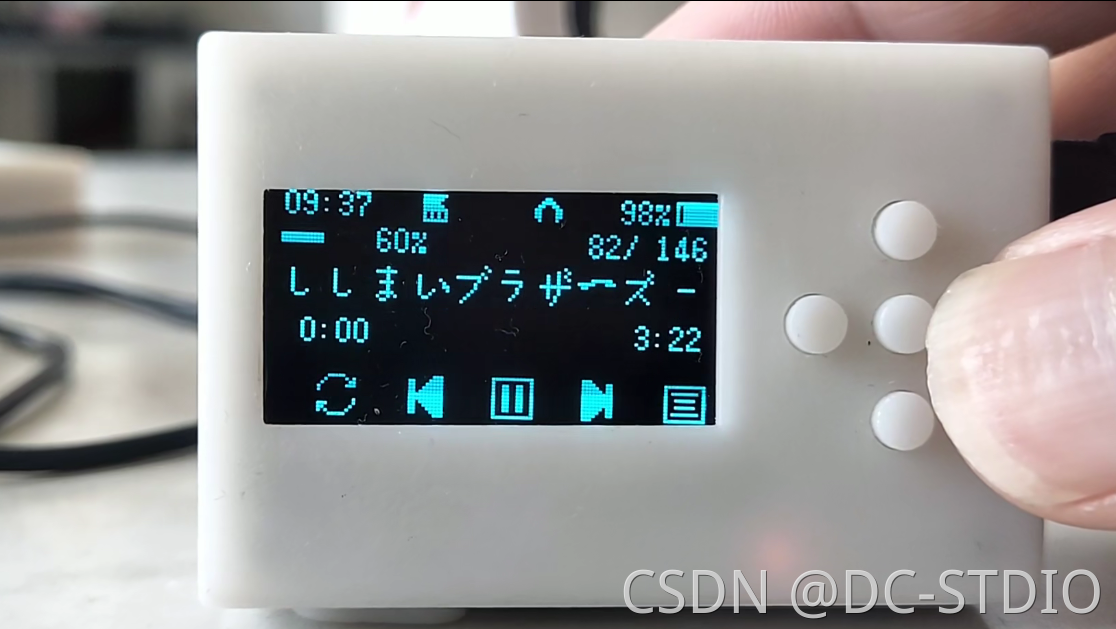
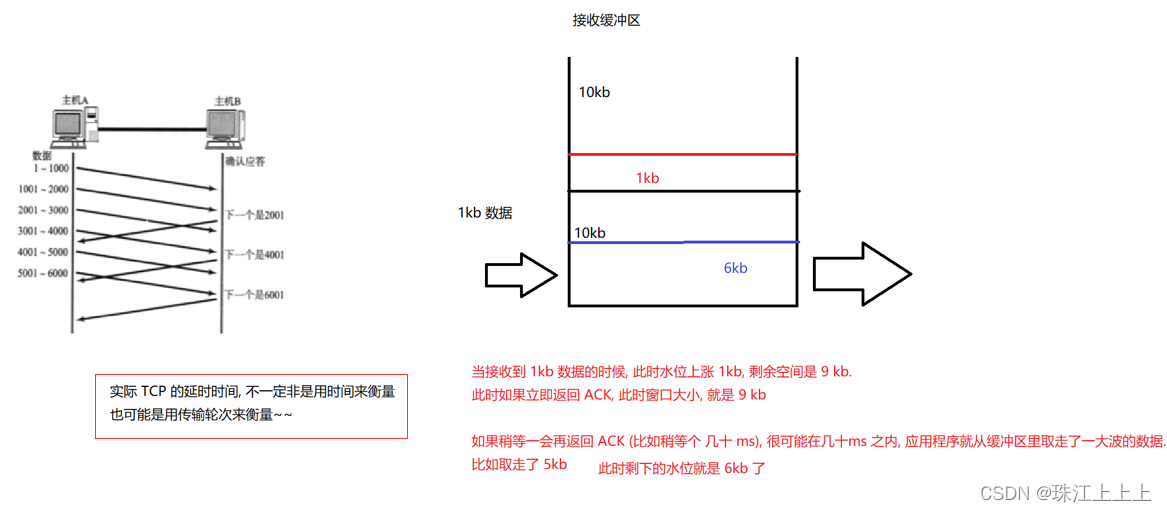
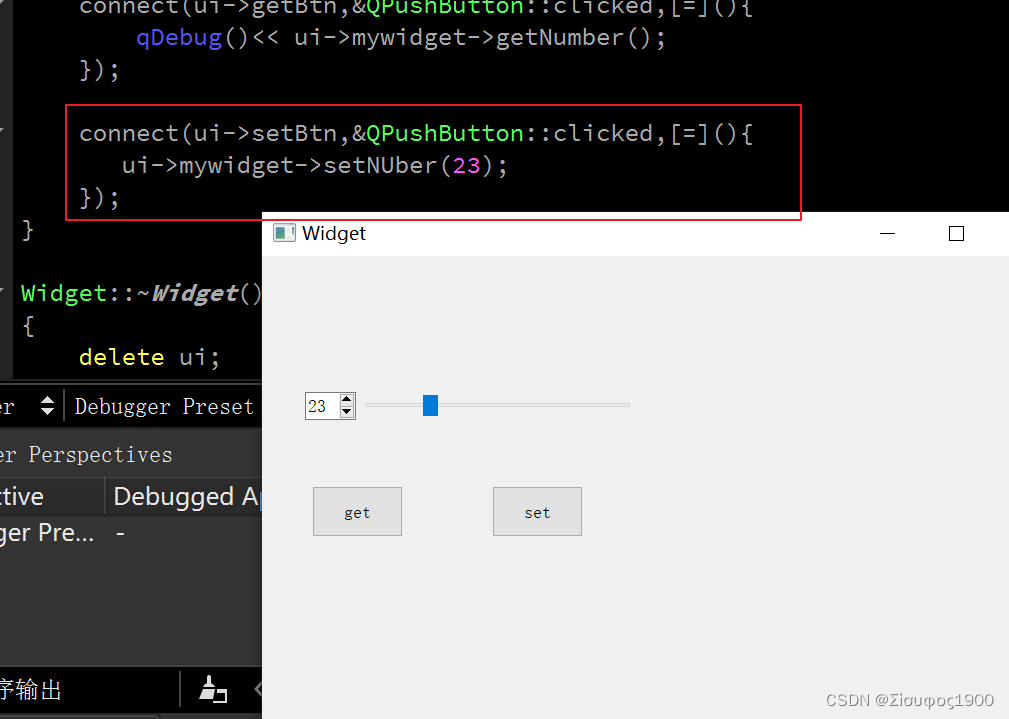
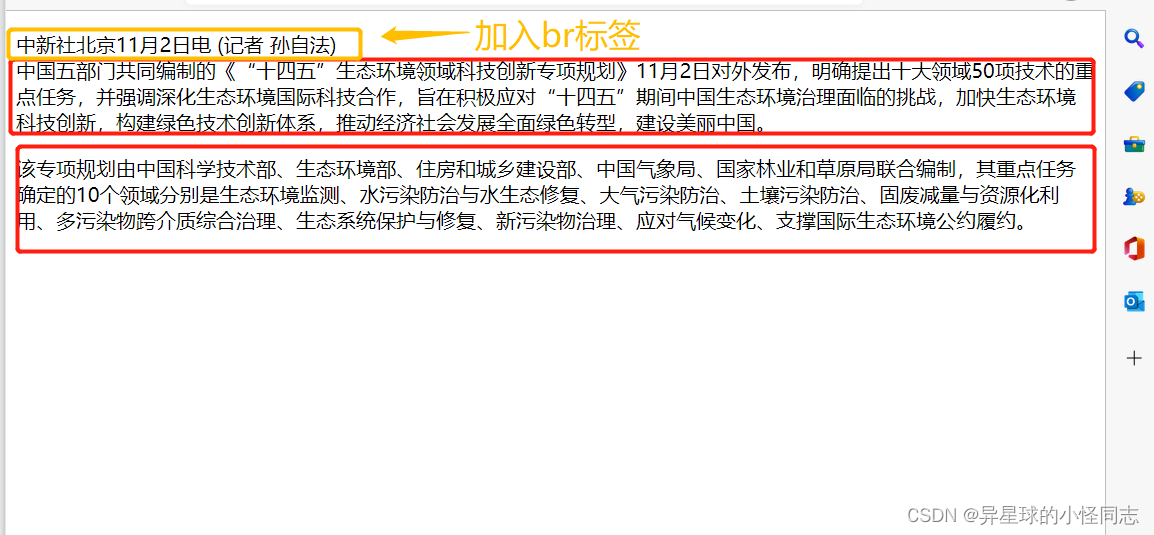
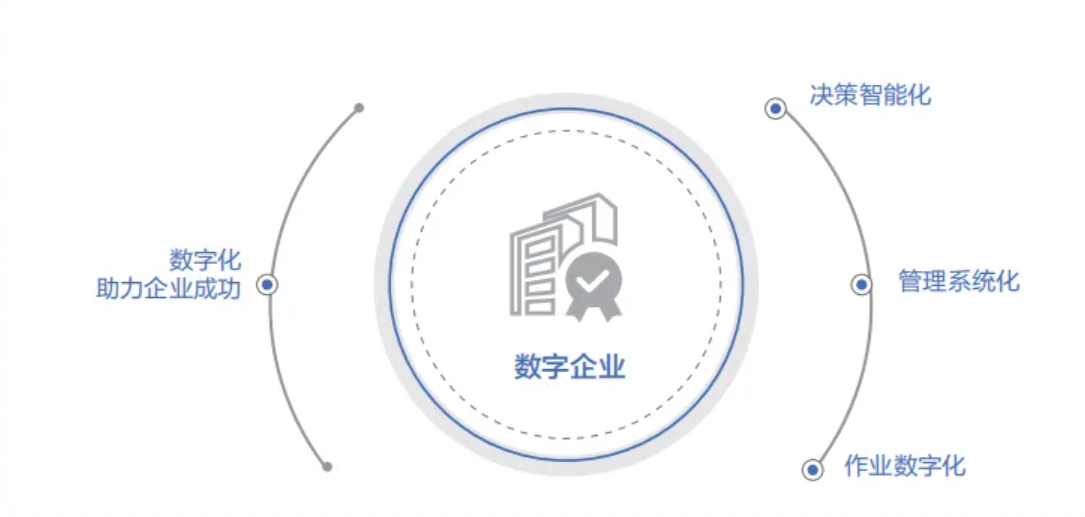
![[Spring MVC 4] MyBatis 分页开发](https://img-blog.csdnimg.cn/0e18962f450340e8a4fdff8208f7943a.png)

